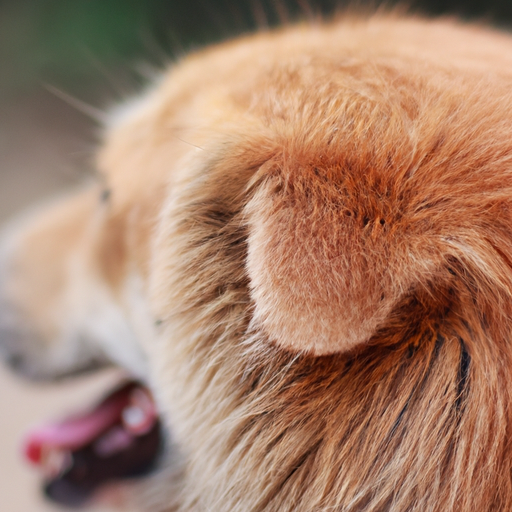As a caregiver to your furry friend, you know that maintaining their health is paramount. One common health issue that dogs often face is flea infestation. Fleas, small external parasites, can cause a myriad of issues, from incessant itching to severe skin infections. Understanding what fleas look like on dogs is the first step in identifying and eliminating these troublesome parasites.
Table of Contents
- What are Fleas?
- What Do Fleas Look Like on Dogs?
- The Flea Life Cycle
- How to Check Your Dog for Fleas?
- Treating Flea Infestations
- Frequently Asked Questions
Key Takeaways
- Fleas are tiny, wingless insects that feed on the blood of animals.
- Fleas are typically brown or reddish-brown and can be seen moving on the dog’s skin.
- The flea life cycle includes four stages: egg, larva, pupa, and adult.
- Regularly checking your dog for fleas can prevent severe infestations.
- There are several effective treatments for flea infestations, including topical solutions, oral medications, and flea collars.
What are Fleas?
Fleas are tiny, wingless insects that feed on the blood of animals, including dogs. They are small, typically about 1/16 to 1/8 inches long, with a hard, shiny body that is flattened from side to side. Fleas are typically brown or reddish-brown and have six long legs, with the hind pair being larger and adapted for jumping.
As a caregiver, it’s important to understand that fleas are more than just a nuisance. They can cause a range of health problems, from skin irritation and allergies to transmitting tapeworms and diseases. One Top Dog provides a comprehensive guide on how to prevent fleas on dogs.
What Do Fleas Look Like on Dogs?
Identifying fleas on your dog can be challenging due to their small size and quick movement. However, there are some telltale signs that your dog might have fleas.
First, you may notice your dog scratching, biting, or licking certain areas excessively. This is due to the discomfort caused by the flea bites.
On closer examination, you may be able to see tiny, fast-moving, brown or reddish-brown insects on your dog’s skin or in their fur. These are the adult fleas.
In addition to the adult fleas, you may also notice flea dirt, which looks like small black or brown spots in your dog’s coat. Flea dirt is actually flea feces, composed of digested blood. When wet, flea dirt turns red or rust-colored.
The Flea Life Cycle
Understanding the flea life cycle can help you effectively combat a flea infestation. The life cycle of a flea consists of four stages: egg, larva, pupa, and adult.
- Egg: After feeding on your dog’s blood, female fleas lay eggs. These eggs are not sticky and easily fall off into the environment.
- Larva: Once hatched, the larvae feed on organic material, including flea dirt. They avoid light and burrow into carpets, bedding, or soil.
- Pupa: After a few weeks, the larva spins a cocoon and transforms into a pupa. In this stage, the pupa can remain dormant for several months until conditions are right to emerge as an adult flea.
- Adult: Once emerged, the adult flea immediately seeks a host to feed and reproduce, thus continuing the cycle.
One Top Dog provides a detailed explanation of the flea life cycle and its implications for flea control.
How to Check Your Dog for Fleas?
Regularly checking your dog for fleas is an important part of preventing severe infestations. Here’s a step-by-step guide on how to do it:
- Start by observing your dog’s behavior. Excessive scratching, biting, or licking can be a sign of fleas.
- Next, visually inspect your dog’s coat and skin. Look for adult fleas, which are small, brown or reddish-brown insects. Also, check for flea dirt, which appears as small black or brown spots.
- Use a fine-toothed flea comb to comb through your dog’s fur, paying close attention to the neck, back, and tail areas, as these are favorite spots for fleas.
- After combing, tap any debris onto a wet piece of white paper. If the debris turns red or rust-colored, it’s flea dirt, indicating the presence of fleas.
Remember, catching a flea infestation early can prevent it from becoming a severe problem. One Top Dog offers more tips on checking your dog for fleas.
Treating Flea Infestations
If you find fleas on your dog, don’t panic. There are several effective treatments available:
- Topical Solutions: These are applied to the dog’s skin and kill fleas on contact, preventing them from biting and laying eggs.
- Oral Medications: These are given to the dog to ingest and work by killing fleas once they bite the dog.
- Flea Collars: These collars release chemicals that kill or repel fleas. They provide long-term protection but must be replaced regularly.
- Insect Growth Regulators: These prevent flea eggs and larvae from developing, interrupting the flea life cycle.
Remember, it’s also important to treat your home and yard, as fleas can survive in the environment for months without a host.
Frequently Asked Questions
Q: Can fleas live on humans?
A: While fleas can bite humans, they cannot live on us. They prefer to live on furry animals with higher body temperatures.
Q: How long can fleas live on a dog?
A: Adult fleas can live on a dog for up to 100 days, during which they feed, mate, and lay eggs.
Q: Can dogs get sick from fleas?
A: Yes, fleas can cause a variety of health problems in dogs, including skin infections, allergic reactions, anemia, and in severe cases, tapeworms and diseases.
Q: How can I prevent my dog from getting fleas?
A: Regular grooming, using preventive flea treatments, and maintaining a clean home and yard can help prevent flea infestations.
In closing, understanding what fleas look like on dogs is crucial in maintaining your canine companion’s health and happiness. Be proactive, stay vigilant, and remember, early detection is key in the battle against fleas.



